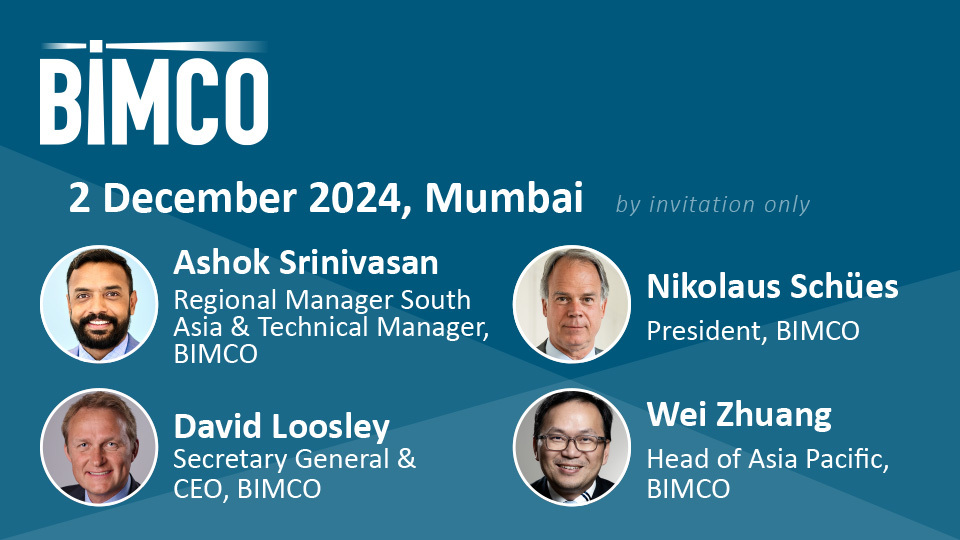IMO SDC 4 will continue the work to make mooring safer on future ships
Overview
The 4th session of the International Maritime Organization (IMO) Sub-Committee on Ship Design and Construction (SDC 4) will be held in London from 13 to 17 February 2017.
SDC considers technical and operational matters related to design, construction, fire protection and equipment of ships, and mobile units covered by IMO instruments. It addresses testing and approval of construction and equipment, including noise on board ships, coating and corrosion protection, steel structures and pollution prevention; as well as matters related to buoyancy, intact stability, subdivision and damage stability of all types of ships.
The agenda for DSC 4 includes the following important items:
Safe mooring operation
DSC4 will continue its development of safe mooring operations. Mooring of a ship is normally done by the deck crew with assistance from linemen ashore. Mooring operations are complex especially on large ships, and the number of serious accidents shows that it is also one of the riskiest operations on board. If an accident occurs, it usually has severe consequences for the persons involved.
The work done by IMO works to ensure that large ships in the future are built in a way that will minimise the number of accidents. An amendment to SOLAS regulation II-1/3-8 is being proposed to ensure that mooring equipment on large ships are fit for purpose. Further, associated guidelines on the design of safe mooring arrangements are being developed.
The regulations and guidelines aims for innovative design features and provision of more appropriate equipment for mooring operations that are applicable for new ships above 3,000 GT. Furthermore, maintenance of mooring lines for both new and existing ships (all ships) will be covered as well.
Determination of the deadweight to be stated on certificates
SDC 4 will discuss the application of deadweight-dependent regulations for those cases where the deadweight at a trimmed waterline exceeds deadweight measured at even-keel. The conclusion will form a IACS unified interpretation for inclusion on ships' certificates.
This matter is important for BIMCO’s work as the deadweight is used in our standard contracts and clauses and therefore not only a figure stated on statutory documents and certificates.
ESP Code
The International Code on the so-called “Enhanced Programme of Inspections during Surveys of Bulk Carriers and Oil Tankers, 2011” (2011 ESP Code) is mandatory.
The Maritime Safety Committee (MSC) agreed that the 2011 ESP Code should be closely aligned with the more practical IACS Unified Requirement on hull survey (UR Z10). This was a means to keep the said Code simple, user-friendly and updated, in the light of experiences gained in the past.
The consolidated ESP Code, if agreed by the SDC 4, will be submitted to the MSC for approval and subsequent adoption.
International Code on Intact Stability (2008 IS Code)
SDC 4 will continue the finalisation of second generation intact stability criteria, an output aimed at addressing dynamic ship stability phenomena in waves. A series of stability-related accidents in the last 15 years, involving ships such as the APL CHINA, M/V ARATERE, and CHICAGO EXPRESS, clearly demonstrated that the current intact stability criteria had to be amended covering dynamic stability behaviour as well.
The new regulation establishes vulnerability criteria for five different stability failure modes. Each of these failure modes are divided into three levels – two vulnerability levels and the third level, which all consist of numerical simulations of the ship's behaviour in waves.
For each failure mode a specific three-layer vulnerability criteria should be determined. The criteria should provide a simple ratio for the likelihood of exposure of the given failure mode. A ship is required to comply with one of the three criteria for each failure mode. The lower level criteria require smaller effort for the designer but operates with larger safety margin. In case the ship fails to comply with the second or third level criteria, it may foresee application of operational limitations/restrictions. The third level contains of direct stability assessment procedures.
Inconsistency seems however to occur in the current draft regulation, as the vulnerability criteria standard of level 1 is satisfied without satisfying level 2. Additionally, many sample calculations show an unsatisfactorily high sensitivity to small changes in draught or trim.
A brief report on the outcome of the meeting will be published shortly after the meeting.
Feedback or a question about this information?
VPS Bunker Alerts
Veritas Petroleum Services (VPS) publish regular Bunker Alerts based entirely on fuel samples and have kindly permitted BIMCO’s Members to access this information.
The Bunker Alerts are not intended to be an evaluation of overall bunker quality in the port or area concerned, but usually highlight a specific parameter within the fuel which has raised a quality issue.
Latest ice reports for members
Latest piracy reports
Latest industry releasable threats
ELSEWHERE ON BIMCO
Contracts & Clauses
All of BIMCO's most widely used contracts and clauses as well as advice on managing charters and business partners.
Learn about your cargo
For general guidance and information on cargo-related queries.
BIMCO Publications
Want to buy or download a BIMCO publication? Use the link to get access to the ballast water management guide, the ship master’s security manual and many other publications.
About a new business partner
We can help members check new business partners. We also help to recover millions of USD (undisputed) funds every year.





